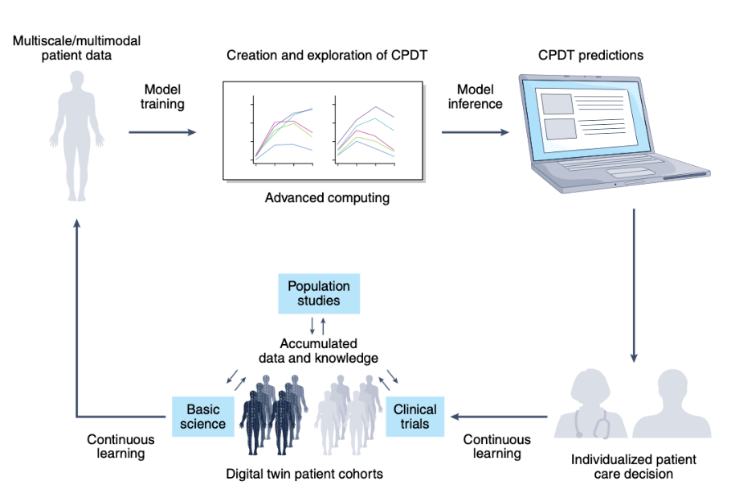News
Commentary Describes How Digital Twins Could Transform Cancer Care
Drs. Emily Greenspan and Eric Stahlberg of NCI’s CBIIT and Frederick National Laboratory for Cancer Research, respectively, contributed to a recent commentary, "Digital twins for predictive oncology will be a paradigm shift for precision cancer care,” published in Nature Medicine. The commentary describes a framework being pursued through a transdisciplinary research community at the intersection of cancer research and advanced computing, called the Envisioning Computational Innovations for Cancer Challenges (ECCIC). The ECICC community was started as an offshoot of the NCI-DOE Collaboration and includes more than 250 members from several national laboratories, academia, and industry.
The vision is to create an in silico individual representation, or cancer patient “digital twin” (CPDT), that dynamically captures the patient’s status across different interventions and time.
Achieving the CPDT will be a giant step forward in predictive modeling. It has the potential not only to guide treatment decisions but to propel precision medicine to a new level.
As noted by the authors, “A revolutionary concept of the proposed CPDT will be its ability to bridge size and time scales of biological organization to address changes spanning the full patient experience, from the molecular level over nanoseconds to the population levels across decades.”
This level of real-time dynamics could transform how clinicians and policymakers approach cancer care and improve the outcomes for patients in ways that were not possible before.
Read the full commentary in Nature Medicine.

